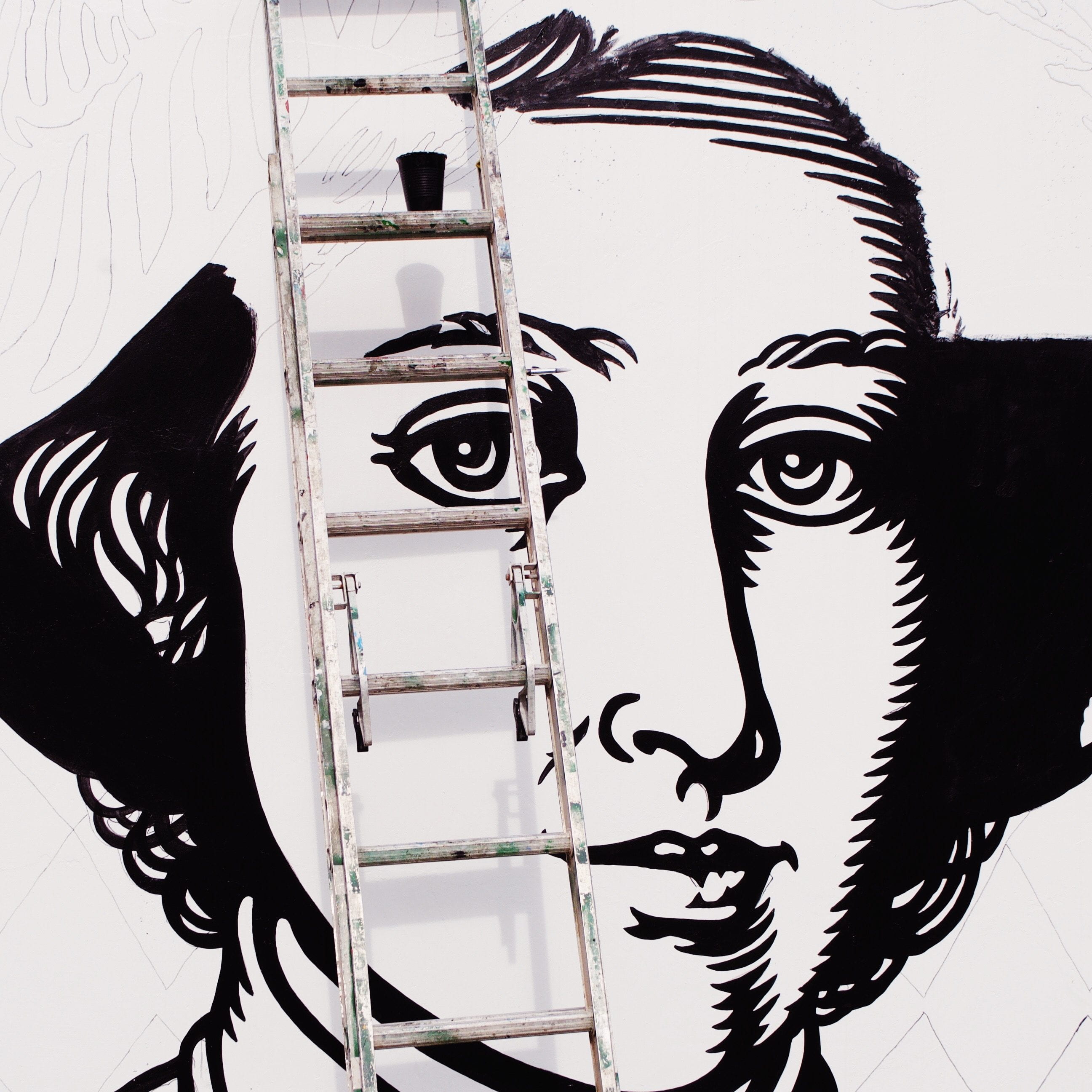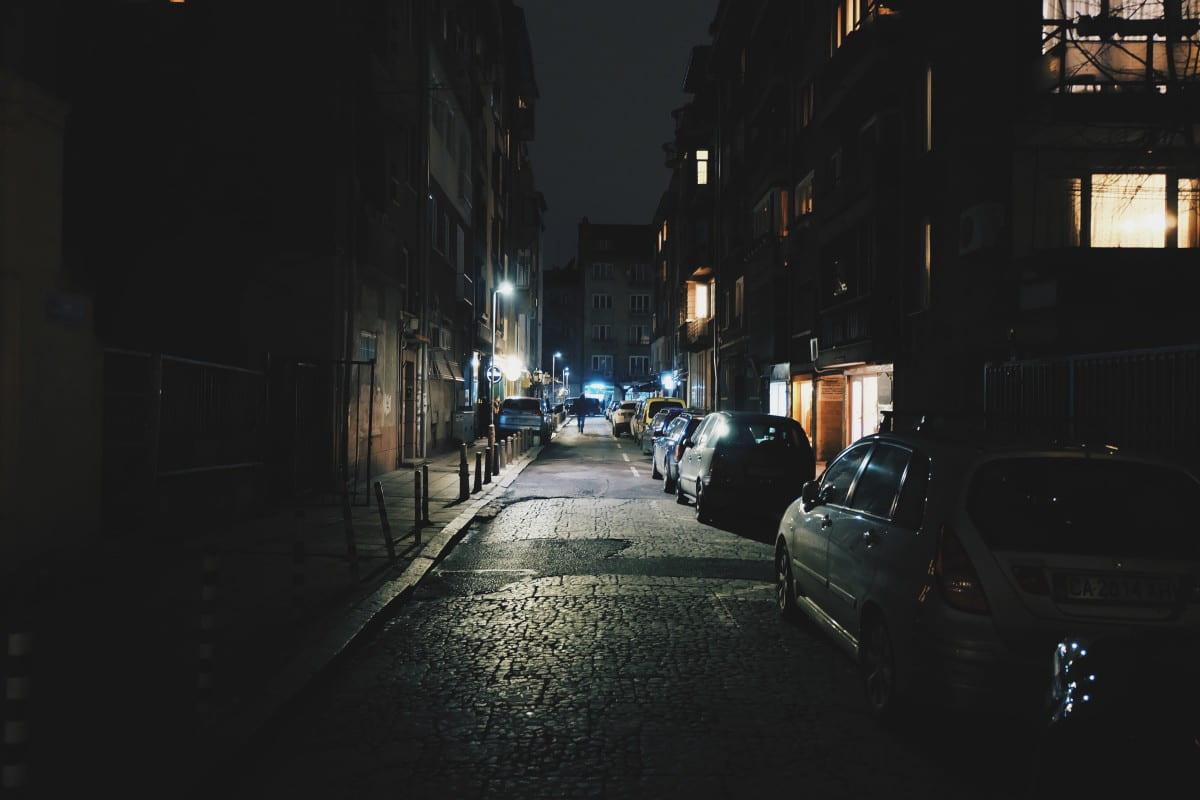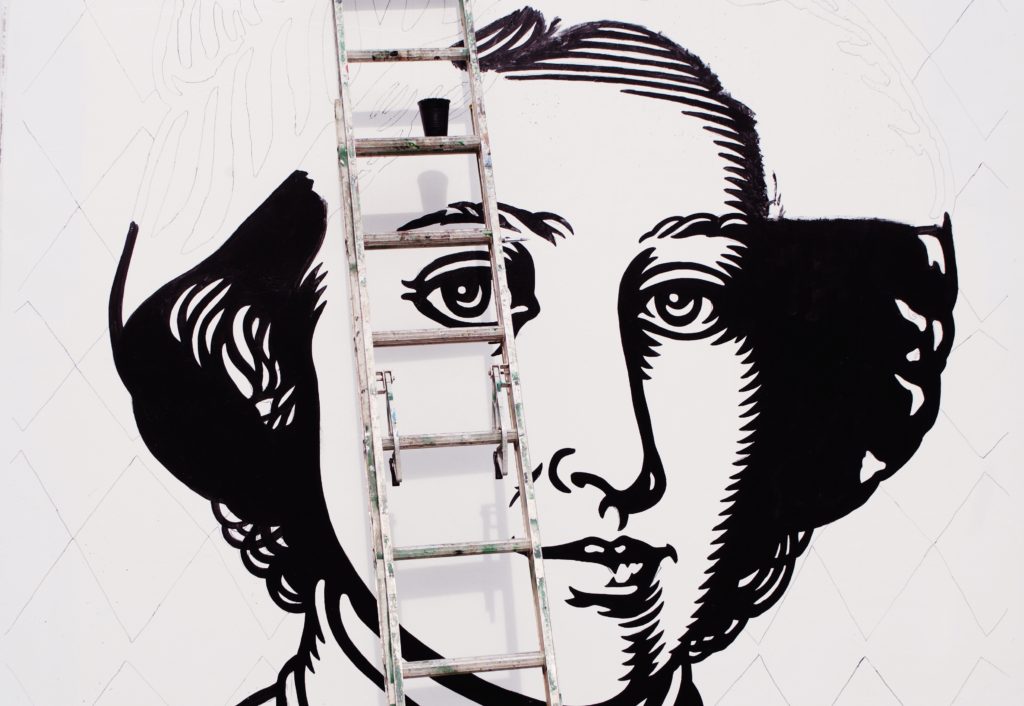
The photo above was taken on West North Avenue in Baltimore City—right outside of Mondawmin. I was pursuing a photo series of the artist Iandry, a 2009 MICA graduate whose art decorates the city. He was painting the “Wall of Wisdom,” a mural which consists of six portraits of historical change makers: Frederick Douglass, Matthew Henson, Fanny Coppin, Robert W. Coleman, William S. Baer, and St. Elizabeth Ann Seton. I would travel into the city twice a week to document the progress of the mural—an experience that was never dull. Each visit, I would watch Iandry encourage community members to get involved in the painting process. Passersby would be given a few simple instructions, and minutes later they were a part of this beautiful masterpiece. He would receive kind words flying out of car windows, gracious thank-you’s from those walking down the street, and an overall approval from the community. I remember him saying once that art doesn’t change people, but it can inspire people to make the changes they want for themselves.
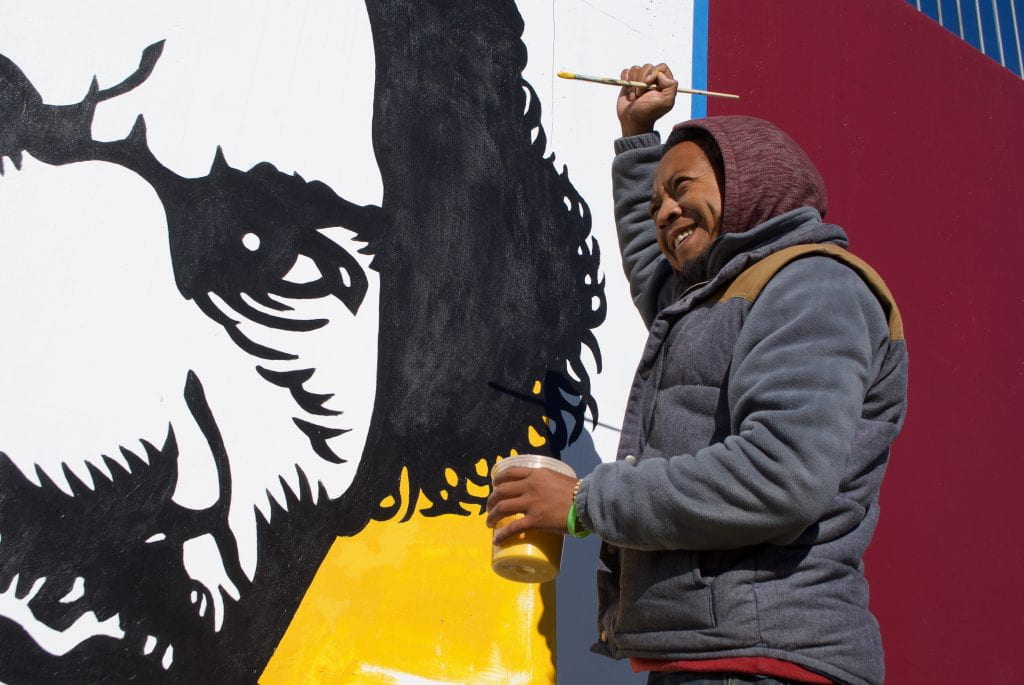
Baltimore City, often considered to be a not-so-nice place by outsiders and even some insiders, holds a lot of beauty in my eyes. My love for the city was planted my junior year of high school when I began working at a restaurant in Federal Hill. Before anyone calls me out, being exposed to this one type of neighborhood didn’t allow me to truly claim love for the city yet. It wasn’t until my sophomore year of college, when I started dating someone who had spent their whole life in Baltimore City, that I began exploring it in a whole new way. Infatuation with the start of my relationship and newfound friends led me to be intoxicated with excitement every time I had a chance to go to Baltimore; suddenly Towson was of complete disinterest to me.
I began to learn and come to know more neighborhoods—Charles Village, Remington, Hampden, Fells Point… Some of which are definitely in the process of being gentrified. But, nonetheless, my love was expanding. It was then that I found myself becoming very defensive over those who only saw Baltimore as a crime-ridden, “ghetto” place. My best friend recently had a conversation with someone she graduated with. She stated that she was planning on moving to Baltimore, and his response was, “Oh, you’re moving to the ghetto!” Both of us were completely awestruck by the sheer ignorance of his statement. Media coverage of Baltimore does an unjust job at countering the bad with the good—I suppose that goes for everything though. Just because windows are boarded up and certain places have a higher volume of crime does not deem them ugly. Crime by some does not account for all. Inner city Baltimore has been put through the ringer. For those of you who have your doubts about the beauty of this city, please examine the systemic oppression that has grasped many parts of the community so tightly. We are all very different from one another but that does not mean we are not all beautiful. The good that people like Iandry are doing is going unnoticed by those people who are so quick to deem Baltimore a bad place. During my time photographing him, I also photographed another artist named Gaia. To me, they are physical proof of Baltimore City being beautiful. They turn walls into art while also seeing the beauty that already exists. The location of the “Wall of Wisdom” mural wouldn’t be considered the safest place for me to be venturing by myself. My boyfriend, who once lived there, always left me with a “be safe” every time I went. I think it is experiences like this that help me better understand communities that differ from my own, and without them, I too would be ignorant.
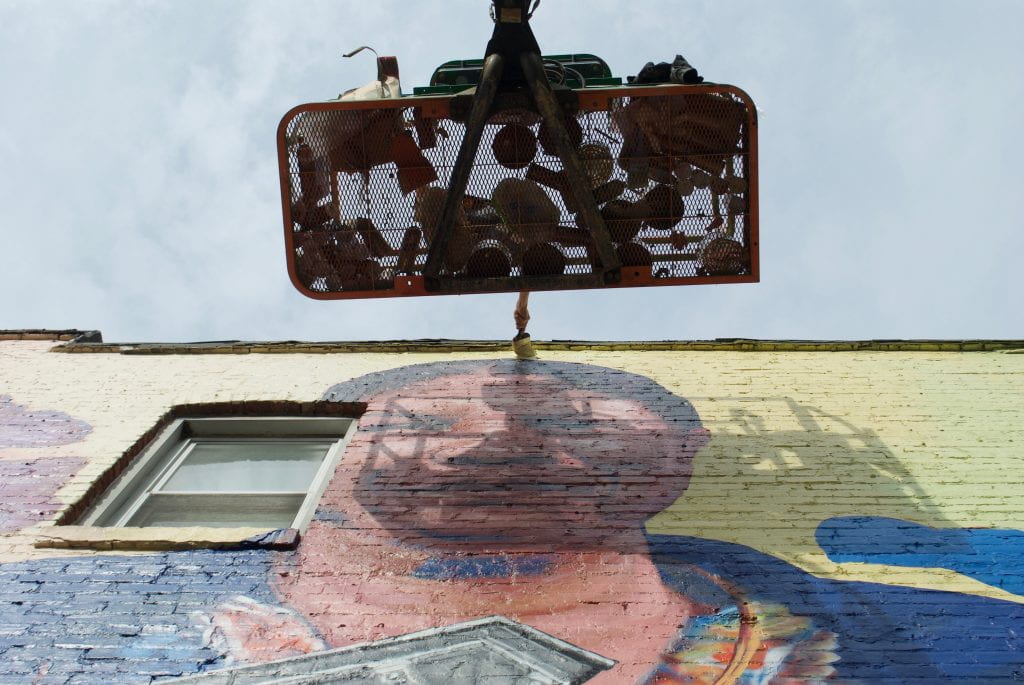

Natalie Jeffery is a twenty-two-year-old food enthusiast who thrives by using words and photographs to uncover the world in front of her. With women’s issues at the forefront of her interests, she would like to use such creative devices to promote gender equality.
